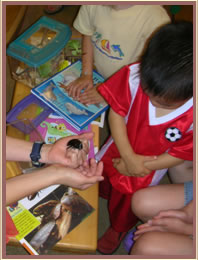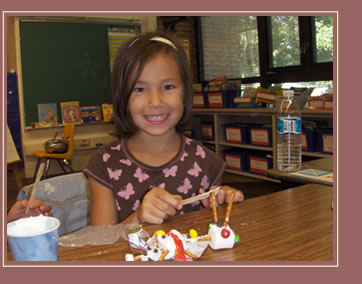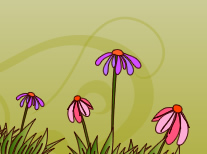 |
 |
| |
Non-insects that are fairly easy to catch are:
- earthworms
- roly-poly bugs
|
| |
Insects and non-insects to avoid:
- bees/wasps/hornets
- cockroaches
- termites
- spiders
|
|
 |
There are many insects you can keep to watch in your classroom. Ones that are fairly easy to catch outside are:
- caterpillars (moth or butterfly larvae)
- praying mantids
- katydids
- box elder bugs
- milkweed bugs
- grasshoppers
- crickets
- beetles (including ladybugs and lightning bugs)
|
| |
You can also purchase insects from teacher/scientific catalogs, such as Carolina Biological: www.carolina.com Common insects these catalogs sell are:
- caterpillars (monarch and painted lady butterfly larvae)
- waxworms (wax moth larvae)
- hissing cockroaches
- praying mantis egg cases
- crickets
- mealworms (beetle larvae)
|
| |
Pet stores also sell insects and non-insects such as:
- mealworms
- crickets
- earthworms
- waxworms
|
|
|
| Remember, if you catch something outside, you will want to release it in the same spot. |
 |
 |
After reading Don’t Squash That Bug! and learning about insects through other books and activities, students can share their knowledge of insects by writing an acrostic poem. For each letter of the alphabet, students write a fact that they learned about insects. For instance, for the letter A, students could write something like “Ants live in colonies” or “Apples are a food that mealworms eat.”
Students will need to get creative for letters such as Q, X, and Z. Allow students to look through the dictionary for different words they can use to create a fact on insects. If they are having a hard time, they can use the letter as the second letter in the word, such as using an “ex-” word for X.
Instead of the alphabet, you can also have students create acrostic poems with the letters of their first and last names or create an acrostic poem about an insect using the letters of that insect’s name.
To see an example of what a second grader created, click here for PDF. |
 |
 |
A great skill for students to practice is comparing and contrasting attributes of various organisms. With each insect group, students can answer yes or no to attributes such as
- Does it have wings?
- Does it eat plants?
- Does it eat other insects?
- Does it make noises, such as chirping or buzzing?
Not all of the questions will be able to be answered just from reading the book. Students can fill in ones they are unsure of with question marks and do further research to find the answers. Some boxes might need to be filled in with the word “sometimes” instead of “yes” or “no.”
This activity can be done as a whole class or in pairs. If you would like to use a premade attribute worksheet, click here for PDF |
 |
 |
If you want to teach your class how pollination works, try this lesson I wrote for the Peggy Notebaert Nature Museum in Chicago: Click here for PDF |
 |
 |
 |
Who doesn’t like using food for science? After completing a unit on insects, end with allowing students to make their own out of food products. Remind them that they should make their insect scientifically correct (3 body parts, 6 legs)—if you are using this as an assessment, you might not want to give too many details. Things to include for them to build with are
- marshmallows
- flat toothpicks and/or thin pretzel sticks
- fruit rollups (good for wings)
- raisins
- various small candies, such as cinnamon hots or mini chocolate chips
- frosting (acts as a glue—or you can have them coat their insect with it as an “exoskeleton”—pass out popsicle sticks to spread with)
|
If this sounds too messy, you can also have students create insects with recyclable odds and ends, such as empty egg cartons, film canisters, and water bottle lids. |
|
|
 |
 |
|
 |







